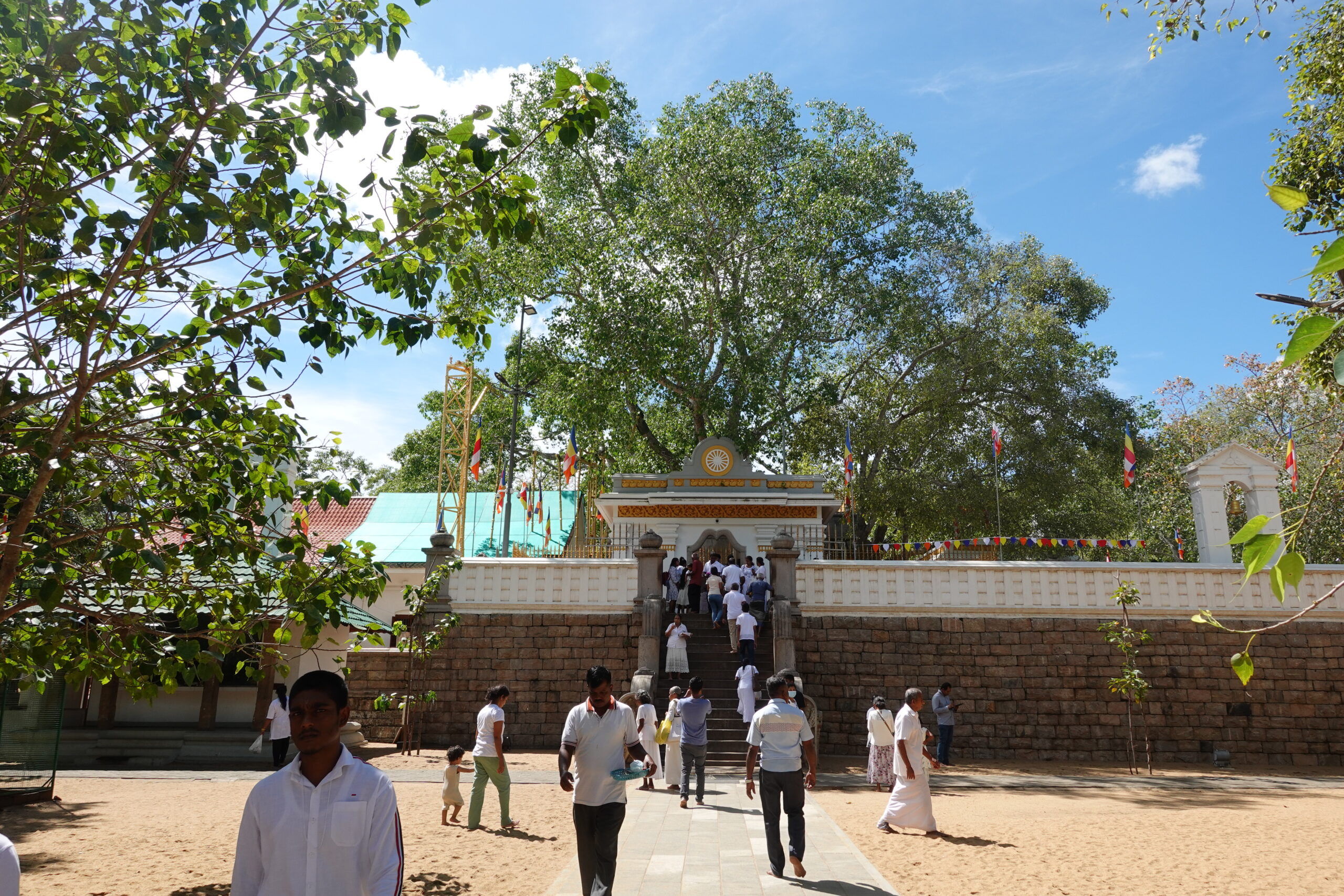Travels to Buddhist sites in India and Sri Lanka (29)
Why I was not impressed by the holy places and Buddhist sites in Sri Lanka - thinking about religion and the "context of life".
After touring Isulmuniya Seishas and Vesagiriya, my next stop was Sree Maha Bodhi Tree, the holiest of the holy places in Anuradhapura.
As its name suggests, the Bodhi tree is a sacred tree symbolizing Buddha's enlightenment. Buddha attained enlightenment about 2,500 years ago in Bodh Gaya, India. The story of how he attained enlightenment is explained in the article below, so I will not go into it here, but Buddha attained enlightenment under this tree.
The sacred Bodhi tree of Bodh Gaya was brought to Sri Lanka and is still an object of worship today.
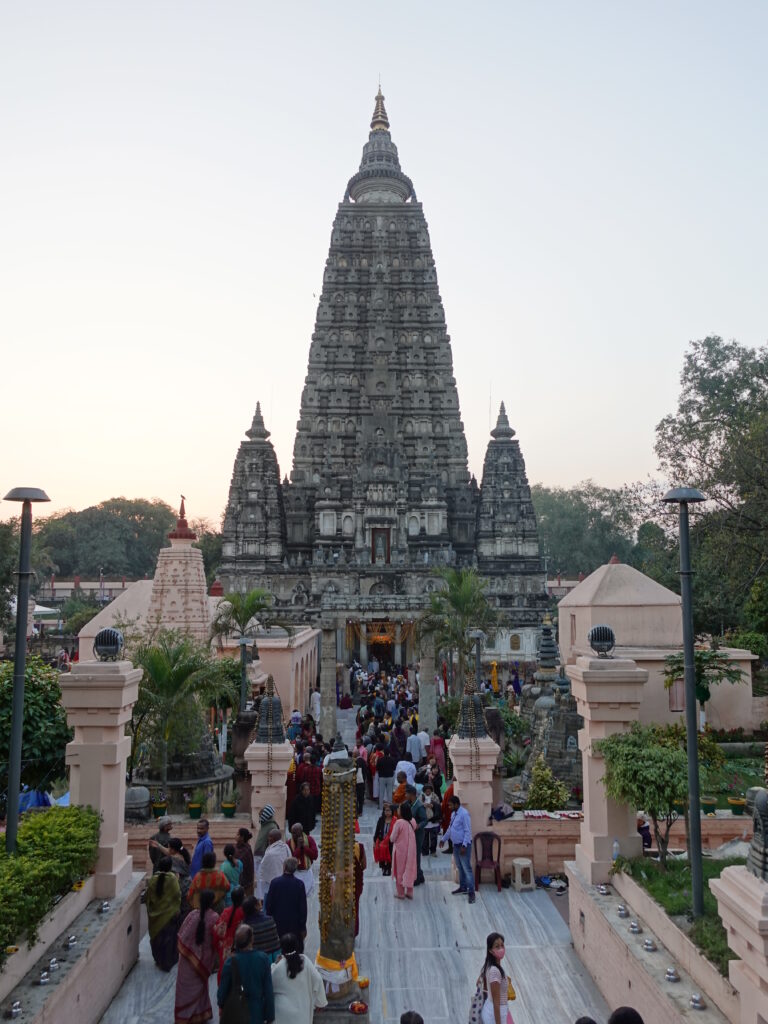
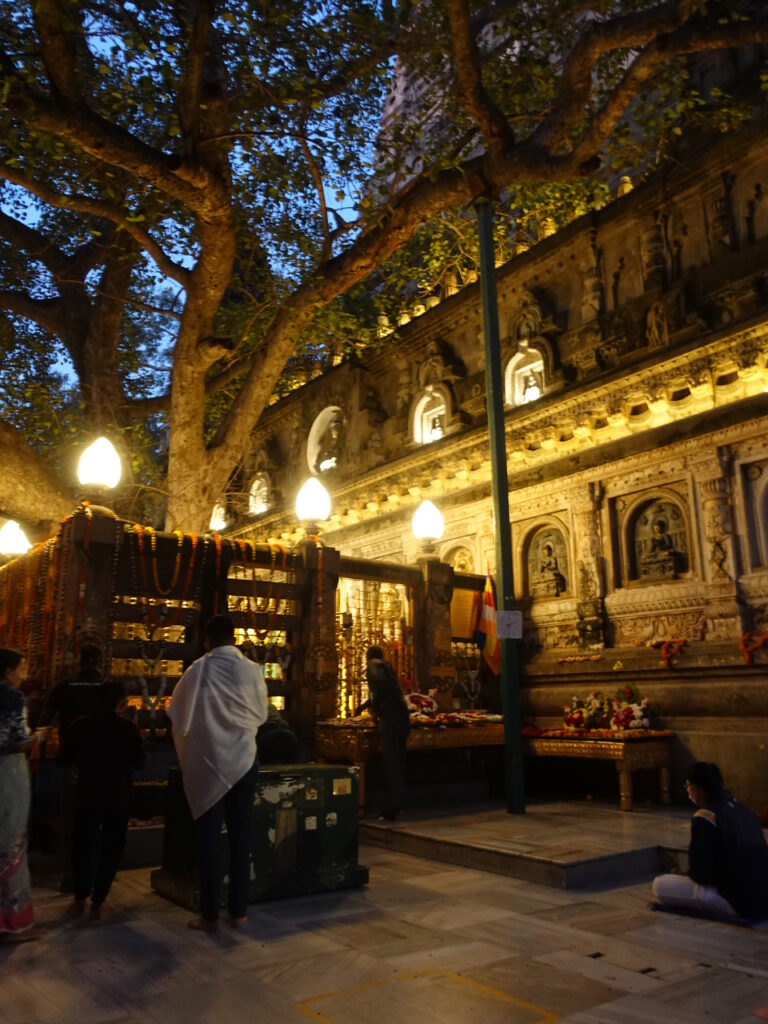
As for who brought the Bodhi tree to Anuradhapura and when, as usual, King Tissa and Elder Mahinda are involved.
King Tissa, who took refuge in Buddhism, was building monasteries one after another in Anuradhapura, and it was here that Nun Sangamitta, sister of Mahinda the Elder, came to Sri Lanka with a share of the Bodhi tree in Bodh Gaya. Being the sister of Mahinda the Elder, it naturally follows that this person is also the son of King Asoka. Like her brother Mahinda, she had also chosen the path of ordination.
Thus, Mahinda Sangamitta and his siblings brought Buddhism and Bodhi to Sri Lanka, and with the strong support of King Tissa, Anuradhapura gained a firm foundation as a Buddhist holy place.
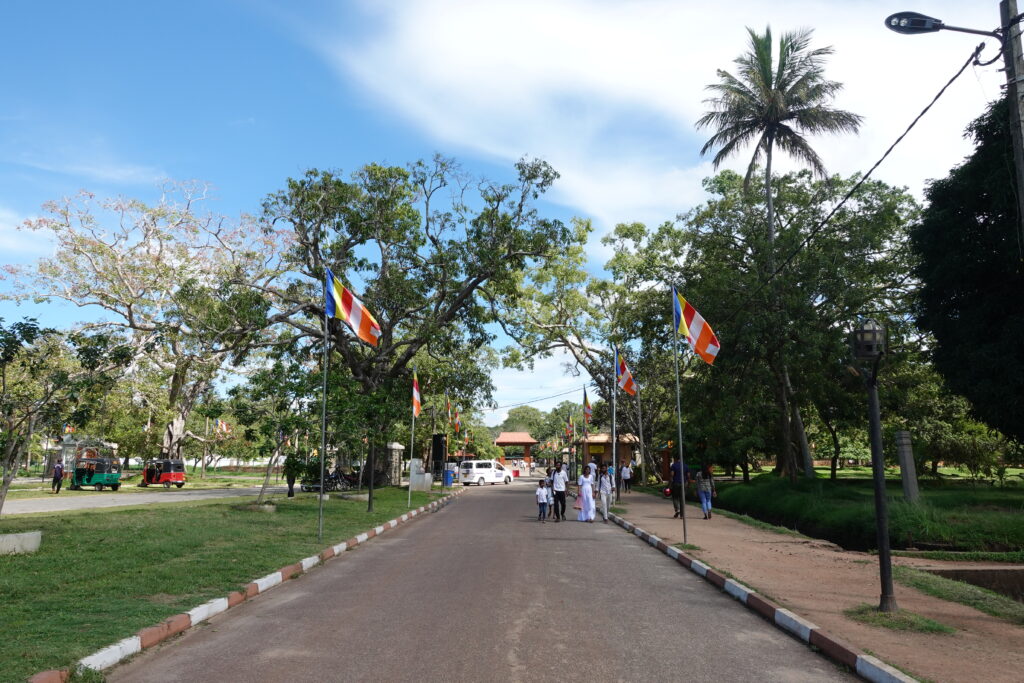
Well, now that I've said all that up front, let's go actually worship at the sacred Sree Maha Bodhi tree.
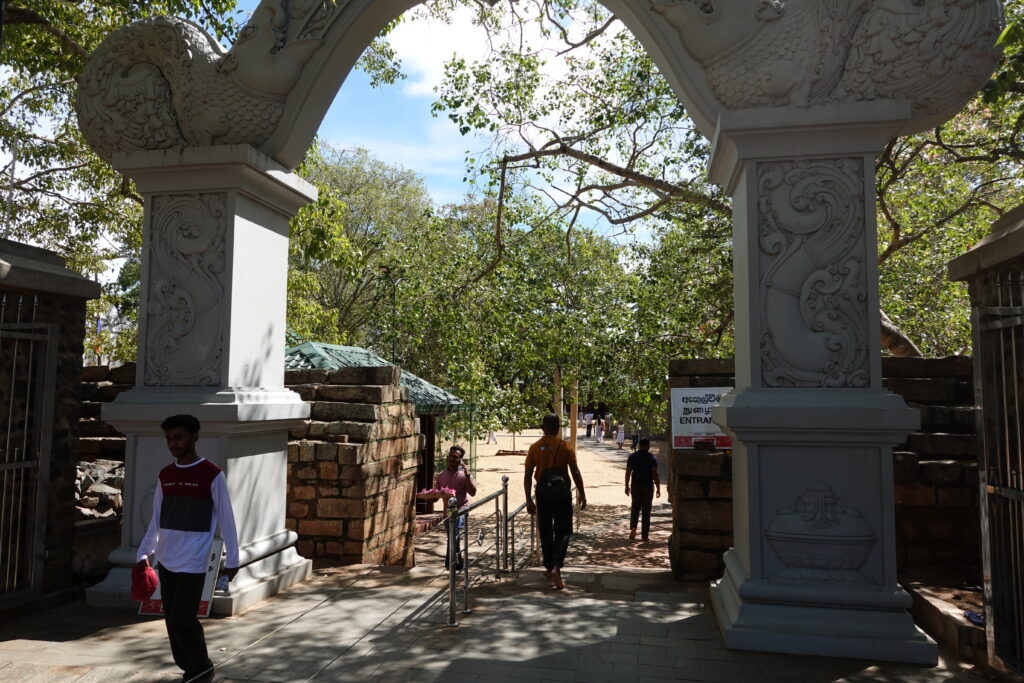
Walking down a path flanked by brightly colored Buddhist flags, we arrived at the entrance to the temple grounds. Entering the gate, we found a space divided in a near-square shape. And in the center of it all sat the Sree Maha Bodhi Tree.
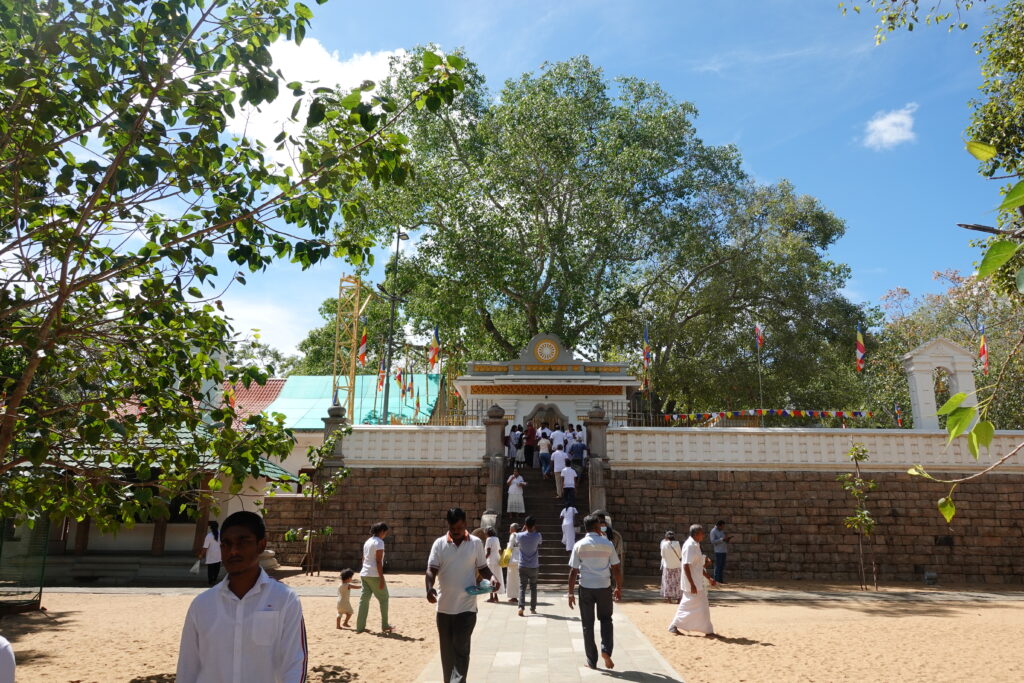
The Sree Maha Bodhi tree is planted one step higher than the temple grounds, and we, worshippers, climb up the stairs to get to the bottom of the tree.
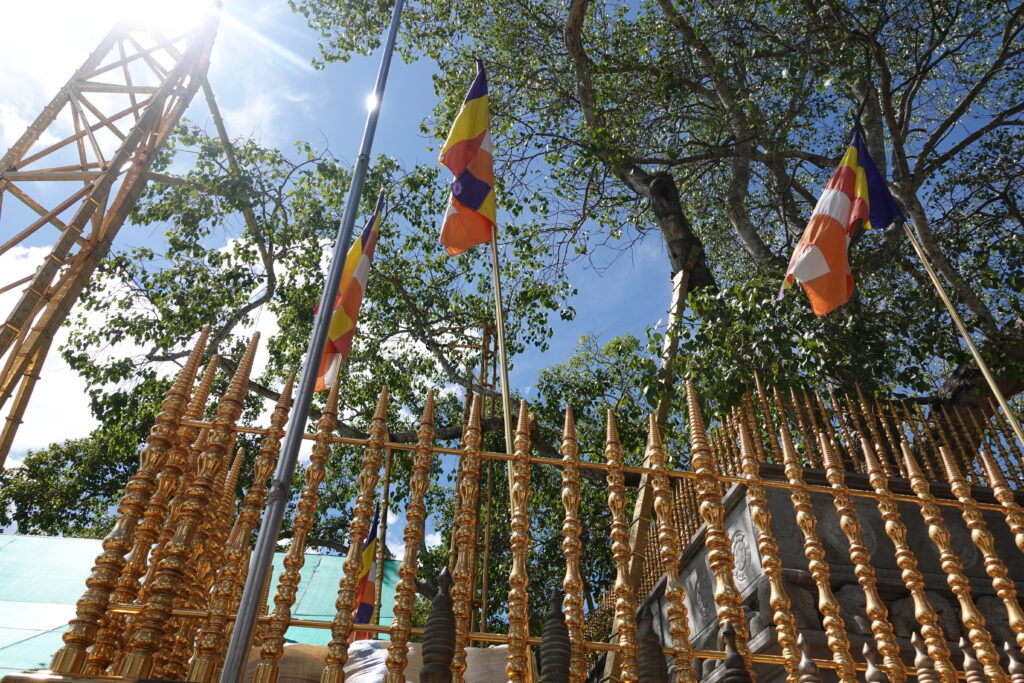
Here is the Bodhi tree looking up from directly below.
The lime tree itself has been replaced by several generations since it was first planted. As one might expect, the same tree has not survived here for more than 2,200 years. However, it is certain that the Bodhi tree, which Buddha enlightened, has been handed down from generation to generation.
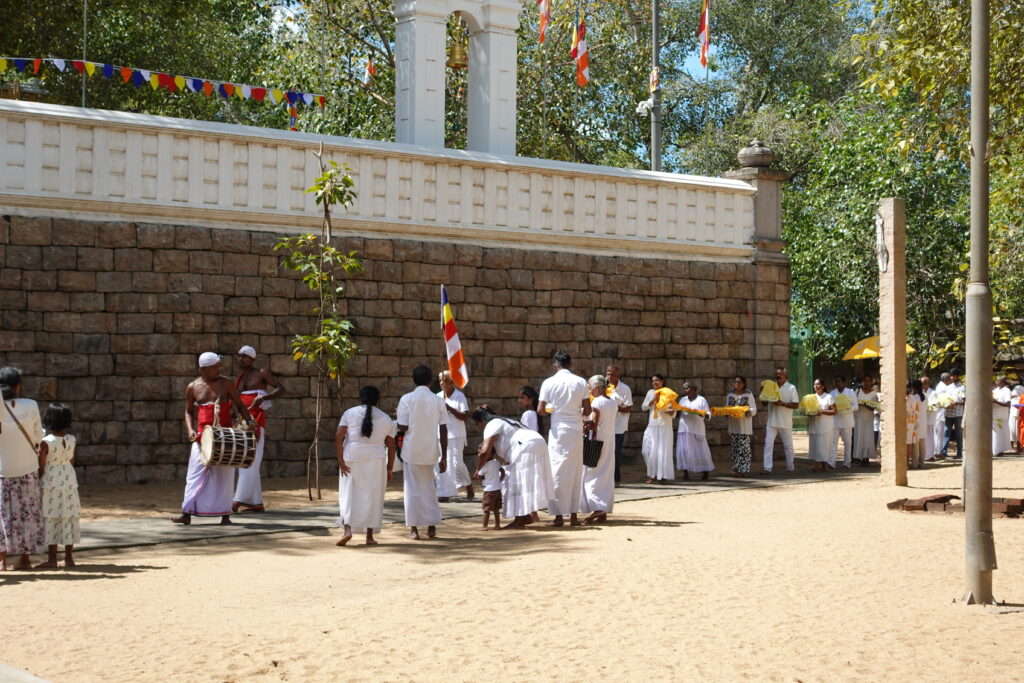
Then I happened to come across a procession of Dharma processions. The group, led by a band, each holding an offering in their hands, walked slowly in front of the Sree Maha Bodhi tree. They were going to make offerings at a temple near the tree.
And what is interesting is that when this procession came, many people here approached them, whispering some words and joining hands.
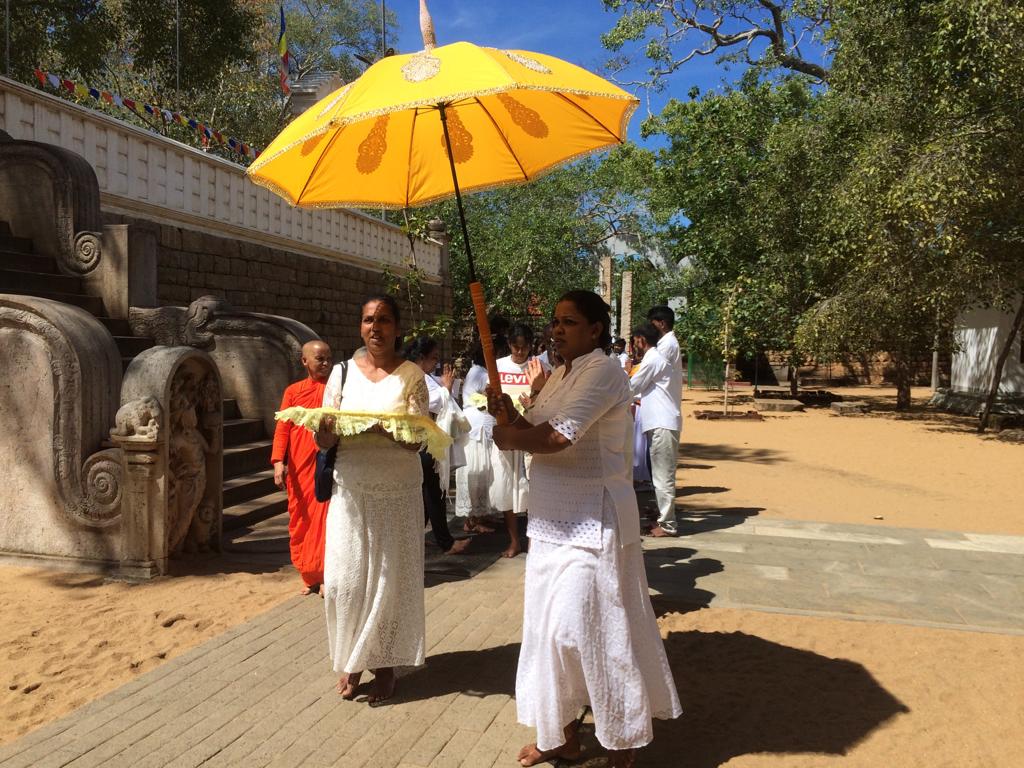
When I wondered what they were doing, the guide told me, "They are doing something that is not in their nature.
This is sharing the merit with me."
Let me add something. In very simple terms, "merit" means "good things I have done. The basic idea of Theravada Buddhism, including Sri Lankan Buddhism, is that by accumulating these merits, good things will happen not only in the next life but also in this life.
Hmmm, this is a custom that is not so familiar to us in Japan. But here in Sri Lanka, it is the norm.
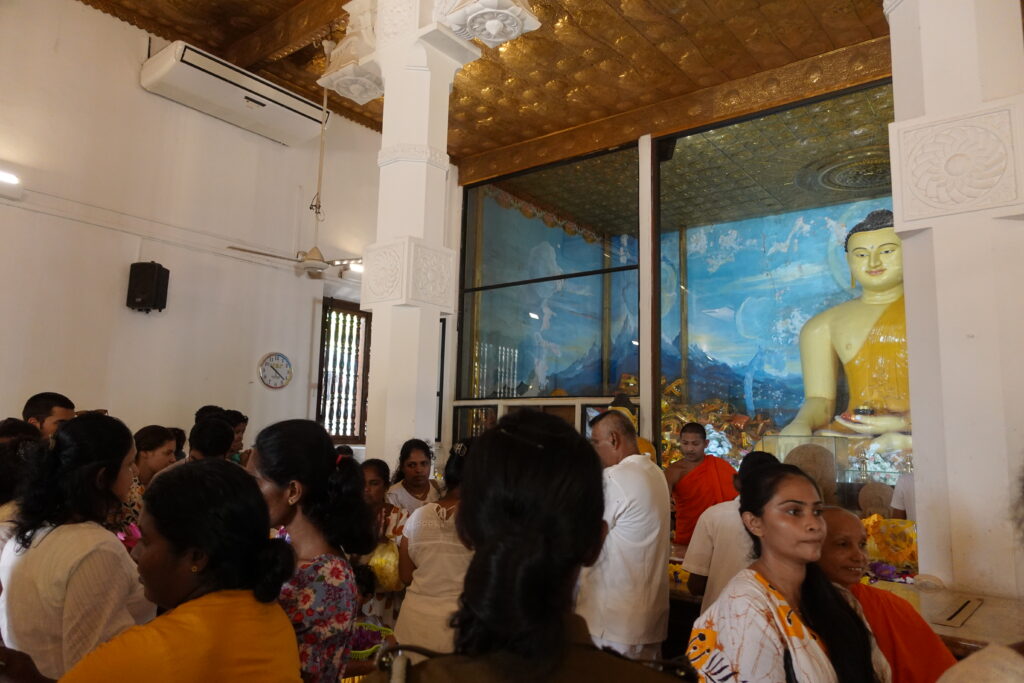
This is the interior of the hall where offerings are made. The hall is always crowded with people offering offerings.
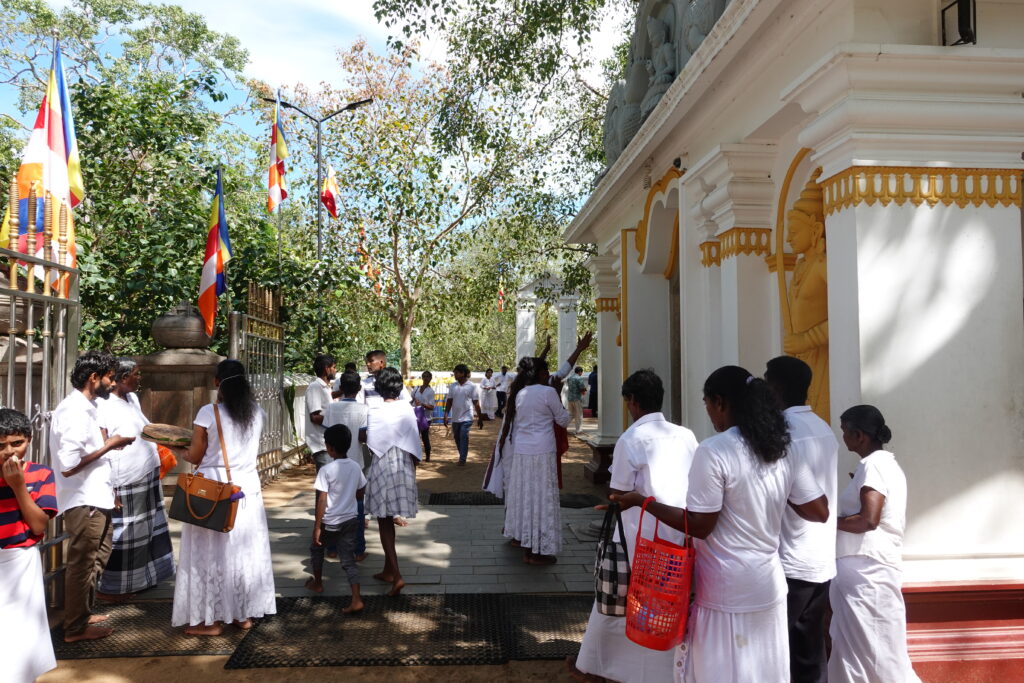
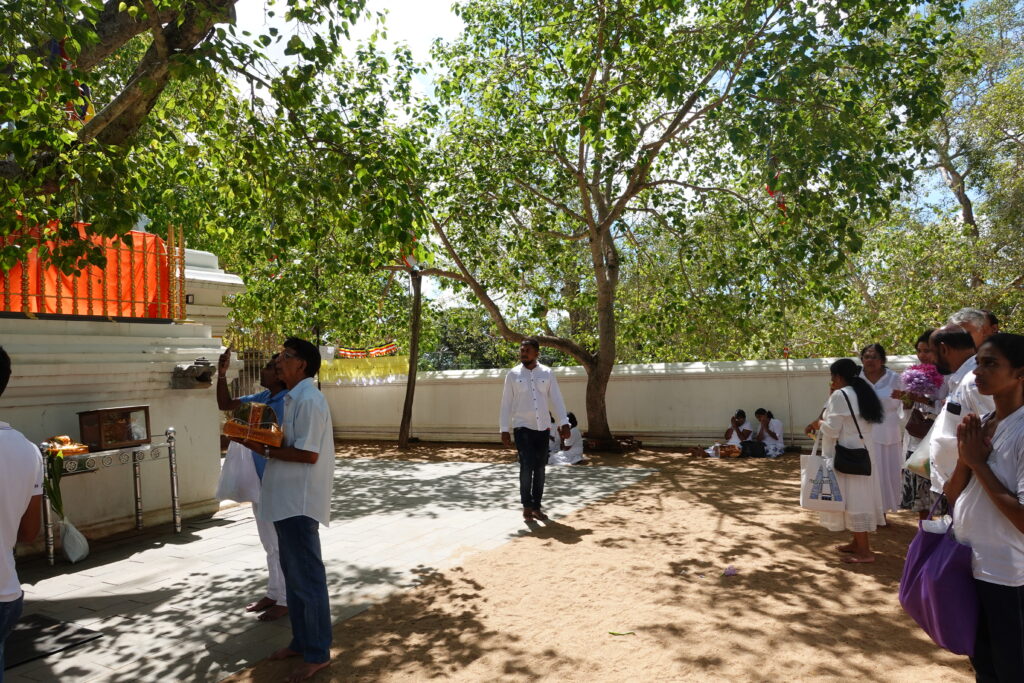
Sri Lankan pilgrims were worshipping around the Sree Maha Bodhi Tree. I saw many people sitting on the ground chanting sutras. According to our guide, many people sit in front of the Bodhi tree all day long and offer prayers in this way. I could feel firsthand that this place is treated exceptionally well as a holy place in Sri Lanka.
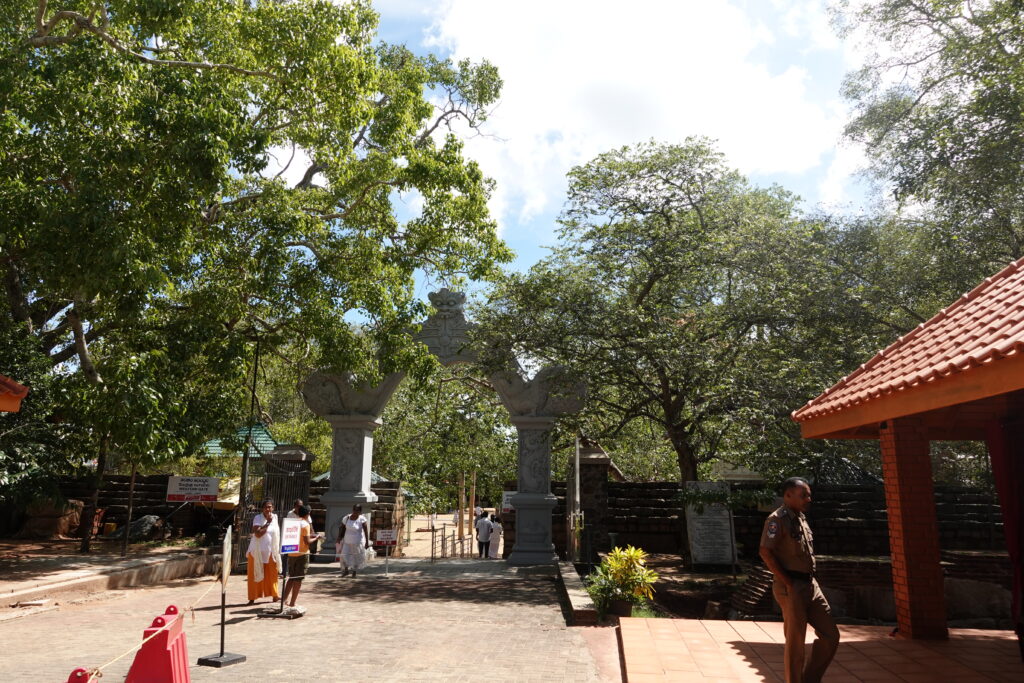
I have thus visited Sri Maha Bodhi Tree, the holiest of all holy places in Sri Lanka, and now let me get down to the business at hand.
Previous Article(28) Anuradhapura, the ancient capital of Sri Lanka: A visit to the holy place of Theravada Buddhism where the Bodhi tree from Bodh Gaya stands.As I told you at the end of this article, I still could not feel anything in this holy place of all holy places....
I have already told you that I have no "archaeological sense". But even so, why do I feel so little of anything? Moreover, this place is famous as a sacred Buddhist site. I am a Buddhist monk, so it is out of the question for me not to feel anything.
But there was still a reason for this.
I was convinced after visiting this Sree Maha Bodhi tree.
This "religious numbness" is what IIt doesn't live in the Sri Lankan context."This was due to the fact that the
I may have confused you all with the word "context" out of nowhere. However, I can only say that it is so.
To put it more crudely, this is what I mean. In other words, the Buddhist sanctuaries here in Sri Lanka are"A sacred place of the Sinhalese (Sri Lankan Buddhists), by the Sinhalese, for the Sinhalese."The reason for this is that the
Yes, it is. This Buddhist sanctuary in Sri Lanka is so Sinhalese that it is difficult for Japanese Buddhists like me to be familiar with it.
Sinhalese is the term for Sri Lankan Buddhists. And Buddhism for the Sinhalese is a Buddhism founded on myths centered on the Sinhalese. Some examples of this are as follows. According to the "Great Dynastic History" (produced in the 5th century), which is still very influential as a chronicle of Sri Lankan Buddhism, Buddha visited Sri Lanka three times, and the places he visited are still believed to be holy places. However, although it is difficult to say that Buddha visited Sri Lanka in historical fact, it is believed as a fact in Sri Lankan Buddhism.
Furthermore, as I told you in the article on Mihintalee, Elder Mahinda is also supposed to have flown in from India. Interestingly, it is said that he came to Sri Lanka because the Indian god Indra (Teishakuten) finally decided to do so after asking him many times. This is exactly whatBuddha's Brahma InvocationThe legend is based on the motif of the Buddha and the gods. The message that Buddhism was brought to Sri Lanka by the Buddha and the gods is contained in this legend.
Other legends peculiar to Sri Lanka are too numerous to mention. We are well aware that there is no such thing as a chronicle without legends, but what is important here is the following fact.
India, the center of Buddhism and a political and economic giant, and Sri Lanka, a small country. Although a small country, Sri Lanka is a small country, they argue in their chronicle: "In Sri Lanka, Buddhist orthodoxy is not impaired at all. In Sri Lanka, Buddhist orthodoxy has not been undermined at all; in fact, they are more faithful to the Buddha's teachings than mainland India.
This is where the meaning of the phrase I mentioned earlier, "Buddhism of the Sinhala, by the Sinhala, for the Sinhala," also comes into view. The context of "we Sinhalese" in relation to the other, which is India, exists here. For the Japanese outsider, the context is distant. Japanese people have their own context.
Moreover, my study of the history of Buddhism in this country has led me to learn some surprising facts.
The fact is that Buddhism in Sri Lanka was actually formed in recent years. Anuradhapura was destroyed by the Chola Dynasty in the early 12th century and buried in the jungle, becoming almost uninhabitable until it was discovered by the British in the mid-19th century.
Moreover, even after its discovery, this sacred site attracted little attention from Sri Lankans. This is precisely where "Buddhism of the Sinhalese, by the Sinhalese, and for the Sinhalese" comes into play. I will discuss the history of this area in a later article, but for me this is a very important issue when considering Sri Lanka.
At any rate, it was not until the 1950s that Anuradhapura here was fully developed as a sacred place as it is today.
Do you all remember the very new Buddha image of the Islumuniya Seishas that I mentioned in my last article?
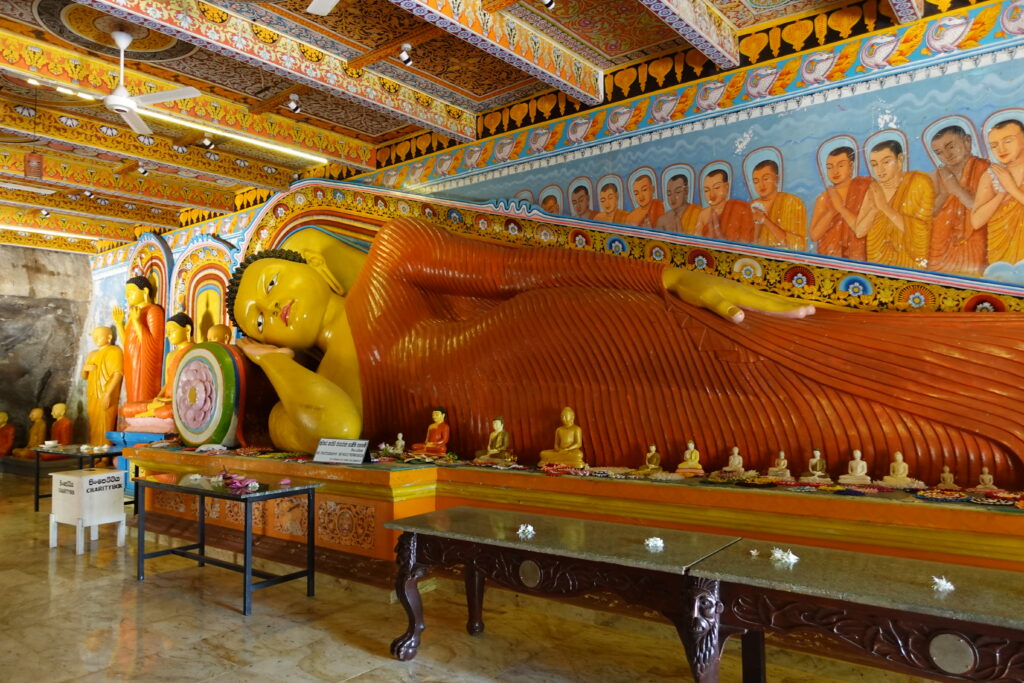
Basically, everywhere you go in Sri Lanka, you will see new Buddha images and murals. This is partly because Theravada Buddhism considers the creation of new things to be a virtue, but the most important reason for this is that there are no old things left.
Sri Lanka may be thought of as a Buddhist country that maintains the world's oldest Buddhist tradition, but in fact, the story is not so simple: in the 11th century, the Buddhist order was almost completely destroyed, and ordained priests were invited from Myanmar to keep it alive. By the 18th century, there were no ordained Buddhists who could give the precepts, and the tradition had virtually ceased to exist. The current Sri Lankan Buddhism is a new sect that was restarted by inviting ordained monks from Thailand at this time.
This is why Sri Lankan Buddhism is "old and new.
I am not a fan of this culture that I cannot help but feel a sense of continuity.
This was a strong feeling I had in Armenia.
Armenia is known as the oldest Christian nation.
I visited this country in August 2022, and every time I entered a church in this country, I could not help but be puzzled by the disconnect between the past and the present.

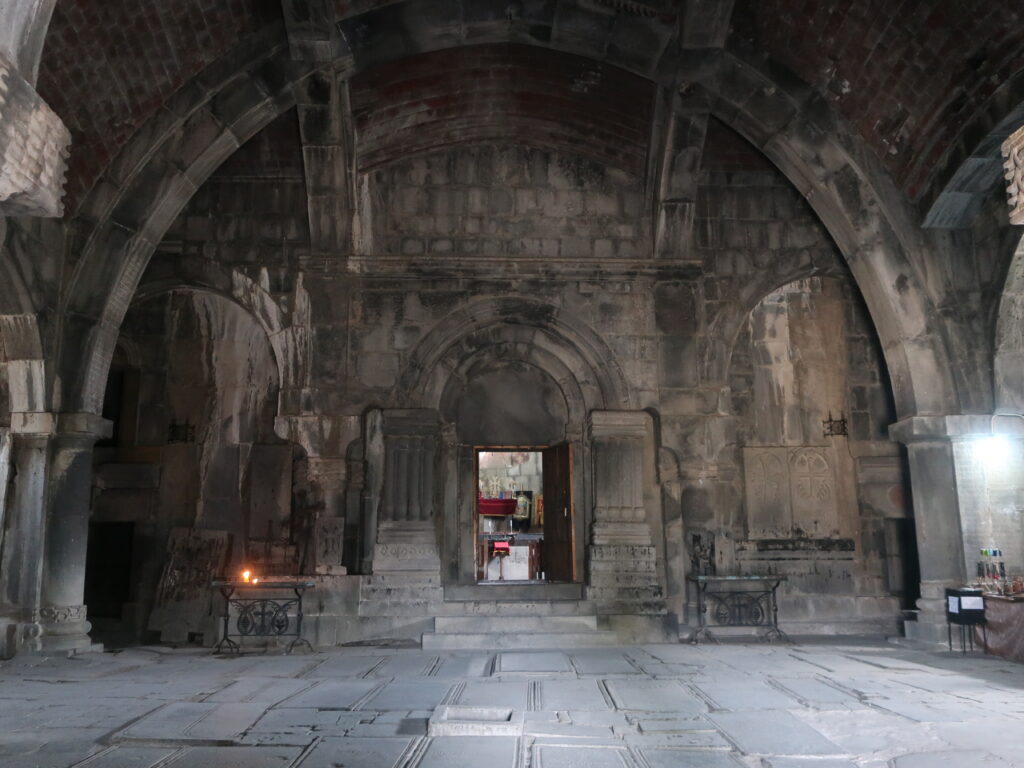
It was as if time had stood still."
This is a simple statement, but when I actually experienced the situation on site, I was shocked to the core.
And for me there is a further question.
The building itself is still old, with time stopped since the Middle Ages, but the icons placed there are clearly new.

This picture shows an icon of a monastery on the banks of Lake Sevan. Do you feel that there is something Persian about it? There is nothing European about it. This is the same in every church I visited in Armenia.
I asked my guide. How long have you had these icons? Have they always been painted this way?
Then the guide replied, "This is relatively recent. In fact, we don't know how the icons were once depicted because they have been lost," the guide replied.
I froze for a moment. No icons? I don't know how to draw? What is the meaning of this?
The guide said he does not know any more.
My discomfort was intensified here.
Armenia is the oldest Christian nation. But we do not know how to depict the icons of the past. In other words, the history is disconnected. I could not help but be puzzled by this.
There is only one Armenian Apostolic Church in the world. It is neither Catholic, Protestant nor Orthodox. What would happen if the sacraments of the Armenian Church were lost due to warfare or changes in the political system?
If this were Catholicism or Orthodoxy, we would be able to quickly restore similarities between the same Catholic or Orthodox churches. However, the Armenian Apostolic Church followed a unique path different from those. That is why, once it is lost, we will not be able to recognize it because there is no similarity.
I am not an expert, so I don't know any more than that. However, I would like to tell you that this Armenian icon has left me deeply perplexed.
This strange phenomenon of having the oldest history but a disconnected history makes Armenia unique.
I feel that Sri Lanka is somewhat similar to this history. Sri Lanka also claims to have the oldest existing Buddhism, but most of the current monasteries and Buddhist statues were created recently.
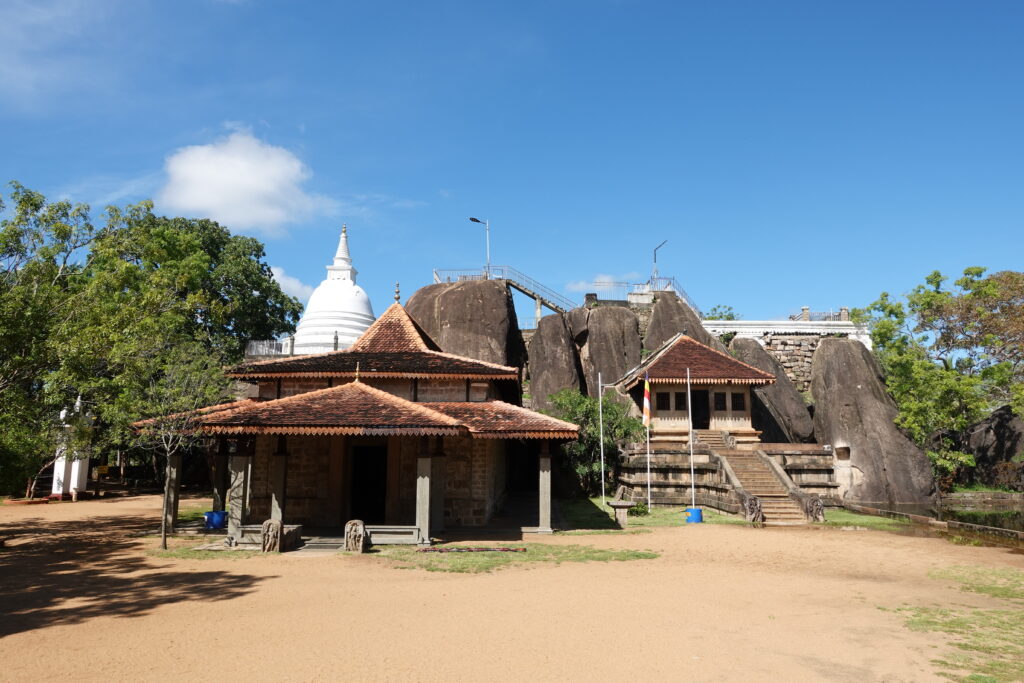
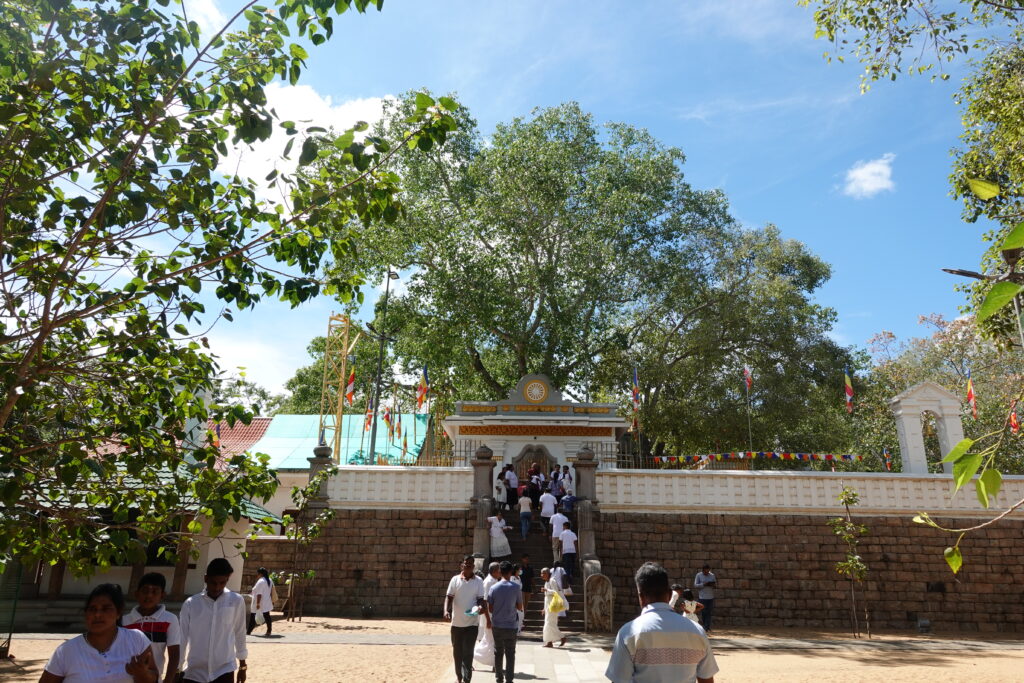
Now, let's get back to the story.
I came here to Sri Lanka and was struck by "religious numbness". Even when I visited the holiest of holy places, I felt nothing. I passed by many people praying wholeheartedly without feeling anything in front of them.
At first I thought it was due to my "lack of archaeological sense". But then I realized that there was a difference in "life context". This is a "Buddhist sanctuary of the Sinhalese, by the Sinhalese, for the Sinhalese", a place that appeals to the emotions in the "Sinhalese context". There is no room for me, a "gentile," to enter.
And this would be the opposite. If a Sinhalese person visits Todaiji or Horyuji in Japan, there is a great possibility that he or she will not feel any religious emotion. It is only natural that even if they are the same Buddhist holy places, if the "context of life" is different, religious feelings will not arise.
No, no, no, no, no, no, no, no, no, no, no, no, no, no, no, no, no, no, no, no, no. You were impressed by Khajuraho and Ellora, too. You have also been impressed by the Vatican and the Church of Rome in your previous articles. What is it with you?"
It is true that this may be so. I have visited various religious sites around the world. In particular, I have visited the Vatican'sSt. Peter's Basilicaand Istanbul.Aja Sofia., ,Beautiful Churches of RomeI have been impressed many times by the
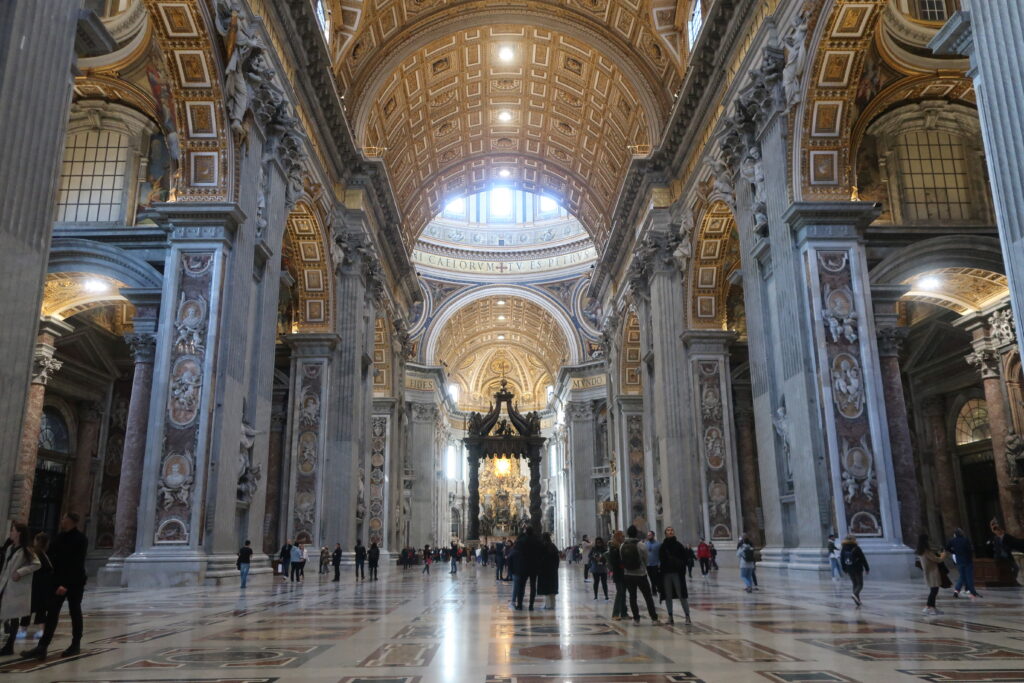
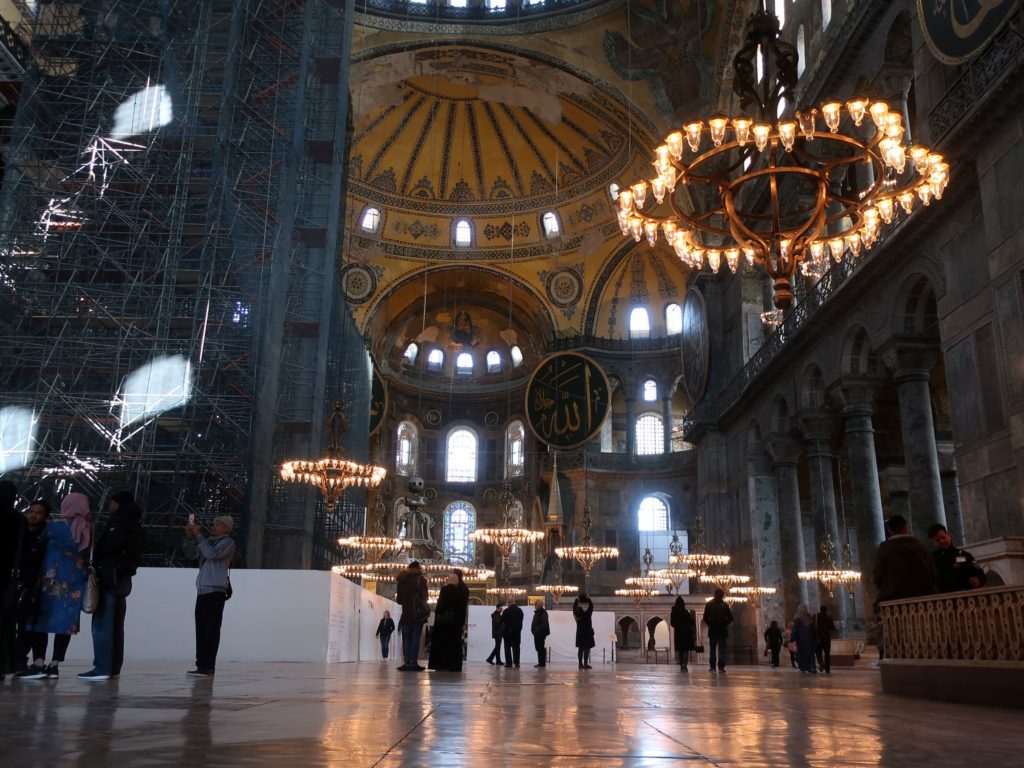
But perhaps it is more accurate to say that it is an emotional response to high art rather than a religious sentiment.
Although the context may be different, the overwhelming art may jump over it and captivate people.
What is also important to me is the continuity and historicity of the place, that "prayers have been offered there for a long time. This may be a very Japanese feeling. I appreciate a darkened historical Buddha statue more than a newly made one. How would we Japanese feel if the Ashura statue at Kofuku-ji Temple was shining in rich colors?
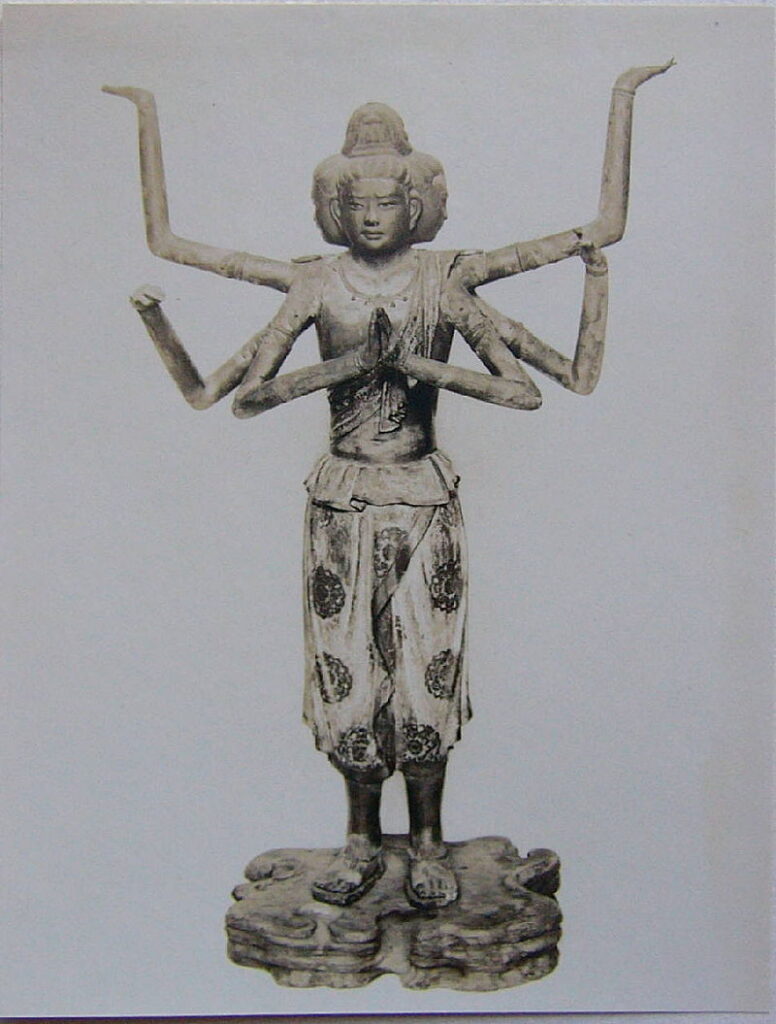
It is precisely because of this figure that we can feel the history of the statue, which has been receiving the prayers of many people for more than 1,000 years. It must be difficult for Japanese people to believe that it is meritorious to repaint and restore this statue to a shiny new finish. For us, this is good. This is "our context.
It is precisely this difference in context, I believe, that has led to "religious numbness" in the holy land of Sri Lanka.
In particular, I have already learned about the history of Sri Lankan Buddhism. I must tell you all something even more shocking in the articles to come.
If I had known nothing about them, it would have turned out differently. But with great apologies to Sri Lanka, I am not sure that I could have experienced the same artistic excitement as in Ajanta, Ellora, and the Vatican (you can expect to see places in Sri Lanka where I was able to experience this excitement later) in my itinerary to Anuradhapura.
We all have our own "life context".
My visit to the sacred sites of Sri Lanka made me keenly aware of the "Sinhalese context. At the same time, it also made me look at "my context".
We unknowingly live "in our own context" and then seek a narrative to go along with it. Just as the Sinhalese have crafted a Buddhist history for the Sinhalese....
I am drawn to Japanese Buddhism because my context demands it. It is not just a matter of my will. There is a larger trend.
Now, how about you all? What context do you all have? What new things may come to light by knowing the context? I think so.
*Below is an article with reference books on India and Sri Lanka that we have referenced in this travelogue. Please refer to them.
periodA list of recommended reference books to help you learn about Indian history, religion, and culture."
periodA list of recommended books for "those who want to know more about Indian Buddhism."
periodA list of recommended books to help you get to know the Buddhist country of Sri Lanka."
Next Article.
Click here to read the previous article.
Related Articles











